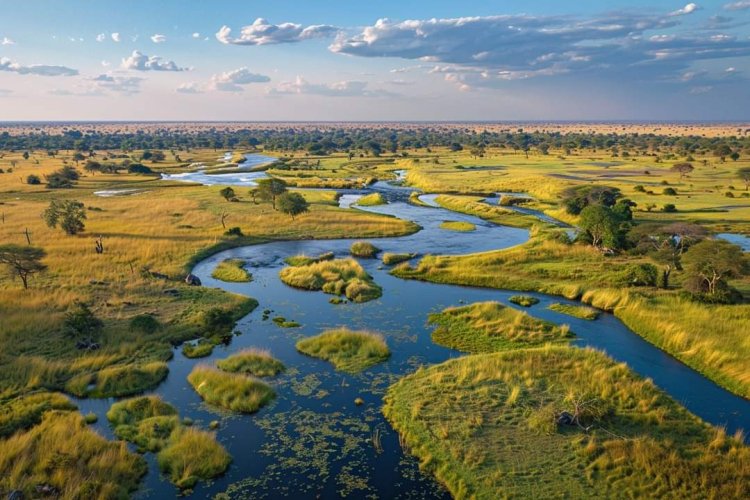
𝟮𝟭 𝗳𝗮𝗰𝘁𝘀 𝘆𝗼𝘂 𝗱𝗶𝗱𝗻'𝘁 𝗸𝗻𝗼𝘄 𝗮𝗯𝗼𝘂𝘁 𝗕𝗼𝘁𝘀𝘄𝗮𝗻𝗮:
1. Botswana gained independence from British colonial rule on September 30, 1966, and has maintained a stable representative democracy ever since.
2. The Okavango Delta in Botswana is one of the largest inland deltas in the world and is a UNESCO World Heritage site. It supports a stunning variety of wildlife, including elephants, lions, rhinos, and leopards.
3. Botswana is one of the world's biggest producers of diamonds and the industry has played a key role in the country's economic development.
4. The economy of Botswana transformed from one of the poorest in the world to a middle-income nation due to its diamond wealth and sound economic policies.
5. Botswana has a policy of high-value, low-impact tourism, which aims to preserve the natural environments while providing exclusive tourism experiences.
6. The traditional craft of basket weaving in Botswana is considered some of the best in Africa, particularly the beautifully intricate baskets made by the women of the Bayei and Hambukushu tribes in the Okavango Delta.
7. Botswana's national animal is the zebra, specifically the Burchell's zebra, which features prominently in the country’s coat of arms.
8. The country is home to the San (Bushmen), who are thought to be some of the world's earliest inhabitants and have lived in southern Africa for tens of thousands of years.
9. Tsodilo Hills, known as the “Louvre of the Desert,” features one of the highest concentrations of rock art in the world, with over 4,500 paintings in an area of only 10 square kilometers.
10. The Tswana people are the majority ethnic group in Botswana, making up about 79% of the population.
11. English is the official language of Botswana, but Setswana is the most widely spoken language in the country.
12. The Chobe National Park in Botswana has one of the largest concentrations of game in Africa, and is particularly known for its large herds of elephants.
13. The Makgadikgadi Pan, one of the largest salt flats in the world, is located in northeastern Botswana and is all that remains of the ancient Lake Makgadikgadi.
14. Botswana's President serves as both the chief of state and head of government, and the President is elected by the National Assembly to serve a five-year term.
15. Botswana has a policy that limits the number of tourists visiting the Okavango Delta to help protect its ecosystems.
16. Botswana's traditional dance styles, such as the 'stamp dance', incorporate elements of storytelling and are performed wearing traditional costumes.
17. The Mokolodi Nature Reserve is a not-for-profit wildlife reserve in southern Botswana, known for its rhino conservation efforts.
18. The capital city of Botswana is Gaborone, which was planned and constructed in the 1960s to serve as the country’s administrative center.
19. The Kgalagadi Transfrontier Park is a large wildlife preserve and conservation area that spans the border between Botswana and South Africa.
20. Botswana is known for having some of the best wilderness and wildlife areas on the African continent, largely due to a strong commitment to wildlife protection and conservation.
21. Music in Botswana ranges from traditional folk music to modern popular music and incorporates instruments like the setinkane (a type of thumb piano) and segankure/segaba (a stringed instrument).
